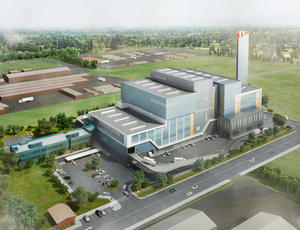Veolia Voice
When it comes to reducing landfilling and transitioning to a circular economy, energy from waste will shift the dial.
Until all products and materials used in Australia are designed with an end of life solution – and while Australians get better at reducing, reusing and recycling – energy recovery is necessary for building a sustainable waste management system.
According to the most recent National Waste Report, Australians landfill 23,000 kt of waste (2020-21) despite the availability of more sustainable waste management options. And while Australia has a target of 80% average resource recovery rate from all waste streams following the waste hierarchy by 2030, we’re currently only recovering 63% of waste – representing only a 2% increase since 2016–17.
It’s time for Australia to embrace energy from waste technology and to adopt a more sustainable waste management solution for our non-recyclables.
Where we cannot first avoid, reuse or recycle waste, the next most sustainable way to minimise environmental impact is to recover it. Energy recovery facilities (ERFs) can extract value from non-recyclable material in the form of energy and enable recycling of metals and reuse of aggregates at the same time. In comparison to landfilling, ERFs also manage waste immediately rather than leaving waste to future generations to manage.
ERFs are new to Australia. However, they are proven and widely used overseas, including more than 450 plants operating in Europe. Veolia operates over 65 energy recovery facilities globally and will soon manage Australia’s first two facilities, opening in WA.
Energy from waste technology works in a similar way to conventional coal or gas combustion, where steam is generated from heat and directed into a turbine to produce electricity. However, ERFs use non-recyclable waste as their fuel source instead of using fossil fuels. In fact, the same energy output can be sourced from three tonnes of waste for each tonne of coal, thereby reducing our reliance on fossil fuels and the amount of waste sent to landfill.
When Veolia calculated the greenhouse gas impact of a potential energy recovery facility at our Woodlawn Eco Precinct, we found it could lead to 50% fewer emissions per year, compared to the ‘do-nothing’ scenario where waste continues to go to landfill and the same quantity of electricity is generated at coal fired power stations. The impact would save approximately 74,000 tonnes of greenhouse gases per year, which is the equivalent emissions of taking around 32,400 cars off the road in Australia.
In the coming few years, Veolia will open Australia’s first ERFs. These projects represent a significant investment in the development of clean, renewable energy and the reduction of Australia’s greenhouse gas emissions. By diverting waste from landfill Veolia is helping to create a more sustainable future for Australia.





